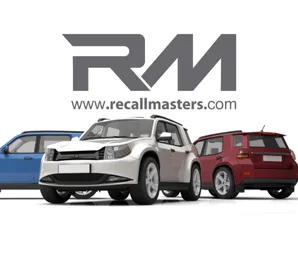The Review Reality
How Online Reputation Is Now Driving New Car Sale
If you spent the last three decades in automotive like I have, you have watched the way customers shop for cars evolve more dramatically than almost any other buying behavior in the country. We hear it over and over again in conferences and conversations. Customers do their research online. Customers arrive in the showroom already educated. Customers know what they want before they ever talk to a salesperson.
While all of that is true, there is one piece of the modern buying journey that gets overlooked far too often. The real decision point for most consumers is not based solely on price or inventory or even convenience. It is based on trust, and the number one indicator of trust today is online reviews.
This is no longer a theory. It is the way business is being done in the United States. It has completely reshaped how customers choose where to buy a vehicle and even more importantly, where to service it.
The Current Market and What Research Shows
Recent consumer studies reveal some powerful realities about today’s car buyers.
A large percentage of customers will not visit a business until they have checked its reviews. Customers want to feel valued. They want to be heard. They want accurate information and they expect transparency. They also expect quick responses when they reach out because fast communication has become the new standard in every service industry.
Most dealers still separate sales reputation from service reputation. The customer does not see it that way. If your service department has a pattern of unhappy customers, long wait times, or poor communication, buyers will simply purchase elsewhere because they fear the ownership experience will be stressful. In the digital age, you are not just selling cars. You are selling confidence in an entire life cycle of ownership.
There is also another important trend. Customers are becoming more selective in who they trust. They have concerns about fake reviews. They know businesses can influence ratings. They no longer look only at the overall star score. They want to see authentic stories, real customer experiences, and patterns of genuine feedback going back months or even years.
This is the new customer mindset and every dealership in America must adapt to it.
Why Reviews Matter More Than Ever
Online reviews are the digital version of word of mouth. They are the first impression for most buyers and often the deciding factor when comparing dealerships. A perfect website and a great advertising campaign cannot overcome a three-star rating or a pattern of ignored complaints.
When customers look at reviews, they are looking for answers to three questions:
- Can I trust these people
- Will they take care of me after the sale
- Do other customers feel valued
If the answer is no to any of these, the customer simply moves on. The competition is only one click away and the modern buyer has unlimited options. This means your online reputation now has a direct and measurable impact on showroom traffic, digital retail conversions, F and I opportunities, and long-term service retention.
How Poor Service Reviews Hurt Sales
The connection between service and sales is stronger than ever. A review on page three of your PDF highlights this clearly. Customers expect dealers to make them feel important and to help them understand their options. When that does not happen, trust is broken. Once a dealership loses that trust, the customer will not buy from that store again and they will actively steer friends and family away.
There is also a much bigger issue. Bad service reviews scare off potential buyers before you ever meet them. If consumers see complaints about misdiagnosed issues, poor communication, upselling pressure, or basic safety concerns, they will not risk purchasing a vehicle from that dealer. They know that sales are temporary, but service is permanent.
If customers do not feel confident in your ability to maintain their vehicle safely, they will shop elsewhere even if your prices are competitive.
Action Steps Every Dealer Can Take Today
The good news is that improving your reputation is achievable. Most dealerships do not have a quality problem. They have a communication problem. Here are the steps I recommend to every dealer I work with.
Make follow up a priority
The most successful stores follow up every meaningful interaction within forty-eight hours. That includes service visits, unsold showroom opportunities, phone calls, parts purchases, and online inquiries. This is the window when customers are most likely to leave reviews and referrals.
Ask for reviews at the right moment
The best time to request a review is immediately after a positive experience. Let the customer know their voice matters and that their feedback helps future customers.
Respond to every review
Consumers read your responses as closely as the reviews themselves. A thoughtful and professional reply communicates that your dealership cares about people, not just transactions.
Address negative reviews quickly and privately
A negative review is always a signal. It highlights an operational problem that can be corrected. Reach out immediately. A sincere personal response can turn an angry customer into a loyal advocate. Ignoring negative reviews communicates that the dealership is overwhelmed or indifferent.
Create a culture that values customer experience
This begins with training. According to your PDF, well-trained employees provide better service and leave customers feeling valued. When the team understands that reviews influence pay plans, CSI, inventory allocation, and long-term profitability, the results follow.
Capture and promote authentic customer stories
Invite customers to record short testimonial videos after a great experience. These videos influence buyers more than any advertisement because they feature real people describing real outcomes.
Audit your online profiles regularly
Check Google, DealerRater, Cars.com, and social channels monthly. Identify patterns. Look for recurring complaints. Look for missed opportunities. Use the data to make operational improvements.
The Road Ahead for Dealers
The automotive industry is entering a new phase where trust is the single most important currency a dealership can have. Consumers expect transparency and consistency. They expect fast responses and authentic communication. Most importantly, they expect to see proof that your dealership delivers the experience they want.
Reviews provide that proof. They tell your story before you have the chance to shake a customer’s hand. Every great experience creates an opportunity. Every negative moment reveals a chance to improve.
Dealers who embrace this reality will win more customers, retain more service business, and stand apart in a competitive market. Dealers who ignore it will see declining traffic and shrinking market share.
The future of your dealership is no longer defined only by the cars you sell. It is shaped by the stories your customers tell about you. When those stories are positive, consistent, and authentic, your reputation becomes your most powerful sales tool.














